Creating a social media strategy for a small business can seem intimidating. With so many platforms out there, it can feel overwhelming to choose which ones would grow your small business the fastest. In a time where customer engagement is everything, venturing into the social media world will be imperative for growth.
Globally, over 4.2 billion people use social media. Moreover, 54% of social browsers use social media to research products and services. If your brand doesn’t have an effective social media presence, you’re already falling behind in a competitive digital world.
In this article, we take a look at why every business needs a social media strategy and provide some actionable tips to help you get started. Let’s dive in:
- Which social media platforms should a small business use?
- Essential social media tools for small businesses
- How to set social media goals for your business
- Social media strategies for small businesses
🔑 What’s the key to building a strong, customer-centric team? Grab our eBook to find out.
Which social media platforms should a small business use?
When it comes to social media platforms, there are five that come to mind. Based on the type of business you have, one could be more beneficial than others, or perhaps a combination is what you need. Here we break down the social media platforms and their use cases.
1. LinkedIn

LinkedIn is a platform for business professionals to network and connect online. If your company is one that loves to share business trends or learnings, then LinkedIn is a great start for your social media presence.
LinkedIn can also be essential when it comes to recruiting new employees as well as good for brand awareness. LinkedIn is a great platform for video, so if you have a dedicated product video or graphics team, this platform may appeal to them.
2. Facebook
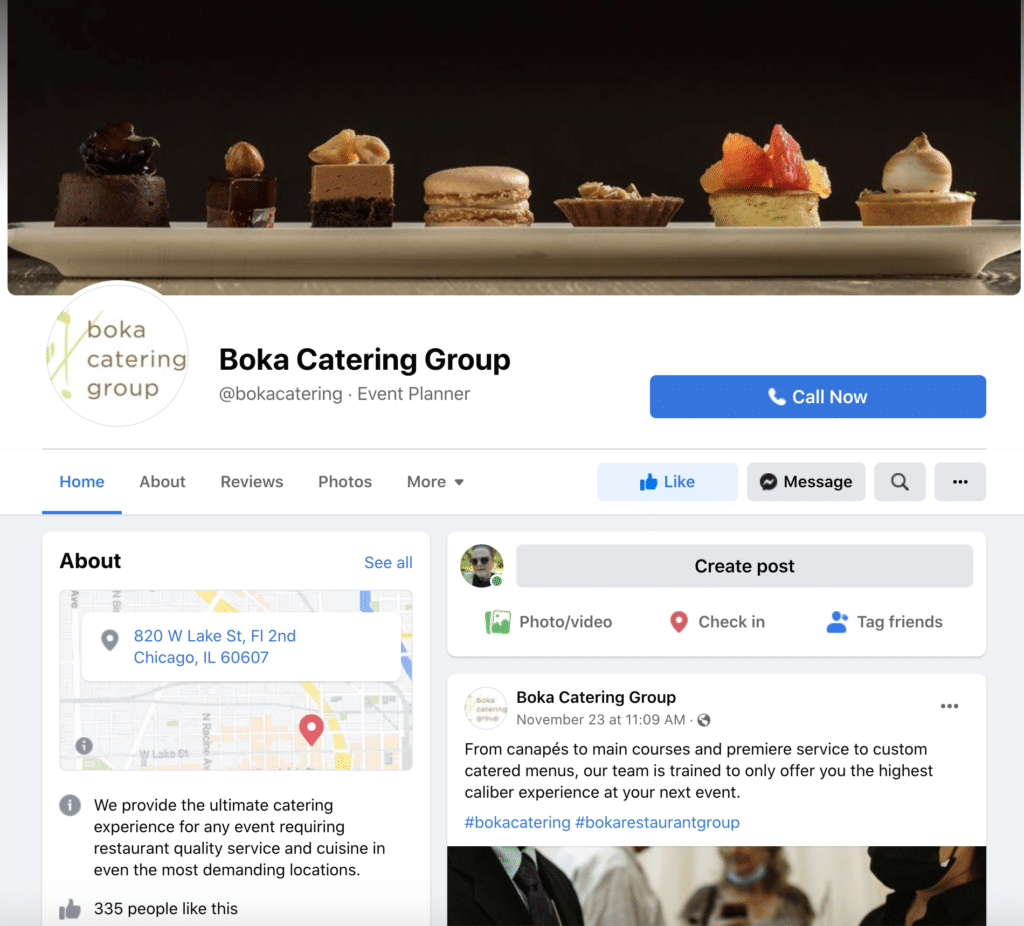
Facebook is most likely the largest and most efficient social media platform that can be used by small businesses. With over 1 billion daily users and 2 billion monthly active users, your target customer is bound to be using this platform.
Facebook is perfect for keeping your customers in the loop when it comes to new promotions and it is also open to engaging with various different types of content. However, over-posting on Facebook can be detrimental to your strategy. Do not post more than once a day, but do post more than once a week. Defining a good cadence for posting is imperative in a successful Facebook marketing strategy.
3. Instagram
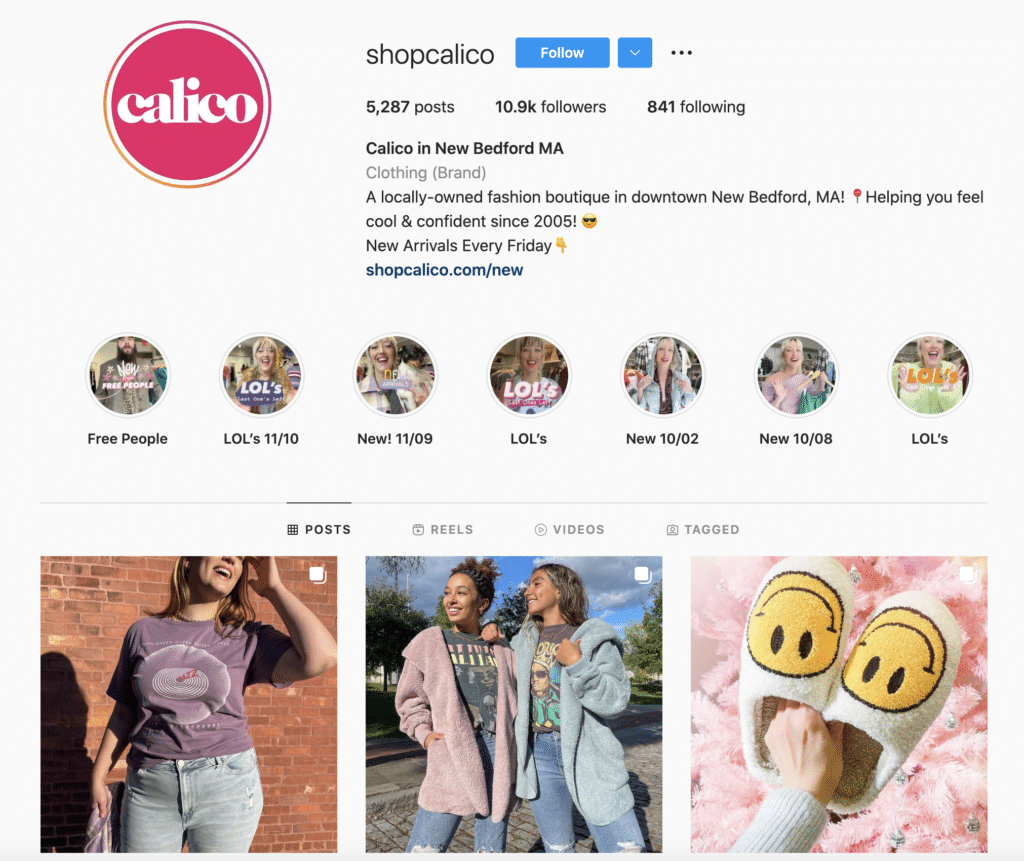
Marketing on Instagram for small businesses has boomed in recent years. Instagram thrives on visuals and offers different mediums within the platform to share information (posts, reels, and stories). Instagram is also the home of influencer marketing, which can create the brand awareness your small business may need.
4. Twitter
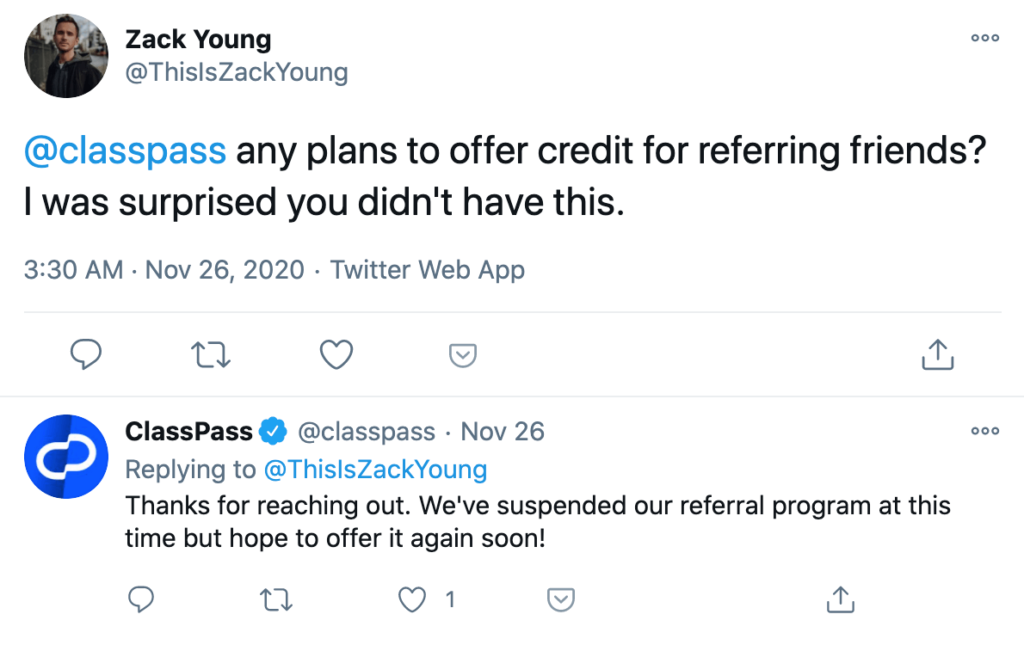
Twitter is the most conversational platform on this list. Unlike Facebook, a Twitter strategy will be more work, as posting several times a day will be imperative in order to break through the noise of 5,787 tweets every second.
5. YouTube
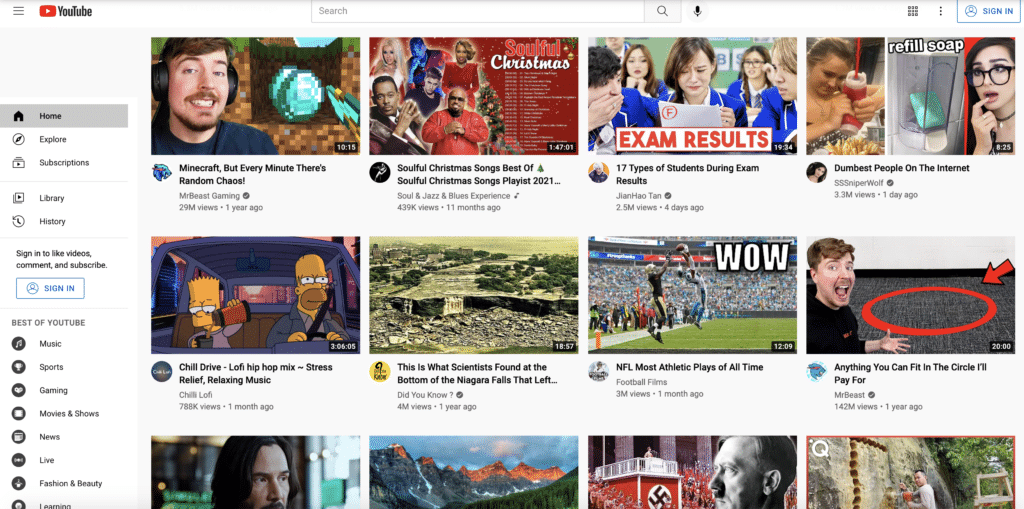
When thinking about social media platforms, many businesses forget about the value of YouTube. YouTube is the second largest search platform on the internet. It is also the second most trafficked website behind Google, which means it has an enormous daily audience.
YouTube allows for unique video content to be created.
YouTube is great for early stage content such as “How To’s” and product demo videos. With YouTube, your small business is going to need either a videographer or graphic designer as well as a YouTube SEO strategy to maximize the benefits of a YouTube social campaign.
6. TikTok

Image source: FanBytes
TikTok has over a billion users worldwide and is an essential social media app for connecting with Gen Z and millennial audiences, as 41% of global users are between the ages of 16–24.
TikTok enables users to create and share short-form video content, and its fast-paced nature means that it’s engaging at all levels. It’s a great tool for marketers as it reflects key social media trends that involve collaboration and creativity among its younger audience.
The best thing about TikTok is that small businesses can make and share videos with just a smartphone.
Posting to all these different social media channels can be extremely time-consuming. Logging in and out and keeping track of individual platforms isn’t an efficient way for your team to spend their time.
Instead, a platform like RingCentral Engage Digital integrates all your social media accounts under one digital roof to streamline your business communications.
Essential social media management tools for small businesses
A quick Google search for “social media marketing tools” will bring up hundreds of options. There are some big players, like HubSpot, Hootsuite, and Sprout Social that are great as standalone social media management and analytics tools to help you manage your social media activities without needing a full-blown social media team.
Look for tools that allow you to manage social media engagement with robust analytics. Hootsuite, for instance, allows you to track engagement rates across channels from a simple dashboard. It also allows you to create detailed reports across all your social media sites, which can help you better understand how your social media strategies are performing. These tools are typically available on tiered pricing plans that can quickly get expensive.
As a small business owner, some of these tools might not be affordable at the beginning. Moreover, it’s likely your tech stack consists of various tools including a VoIP phone system, video conferencing software, customer relationship management tools, productivity software, and much more—which all cost money!
A platform like RingCentral Engage Digital allows you to consolidate all of your essential business tools and apps into a single platform. Instead of having to switch between different social media platforms to respond to customer support requests, you can do it all from a single app:
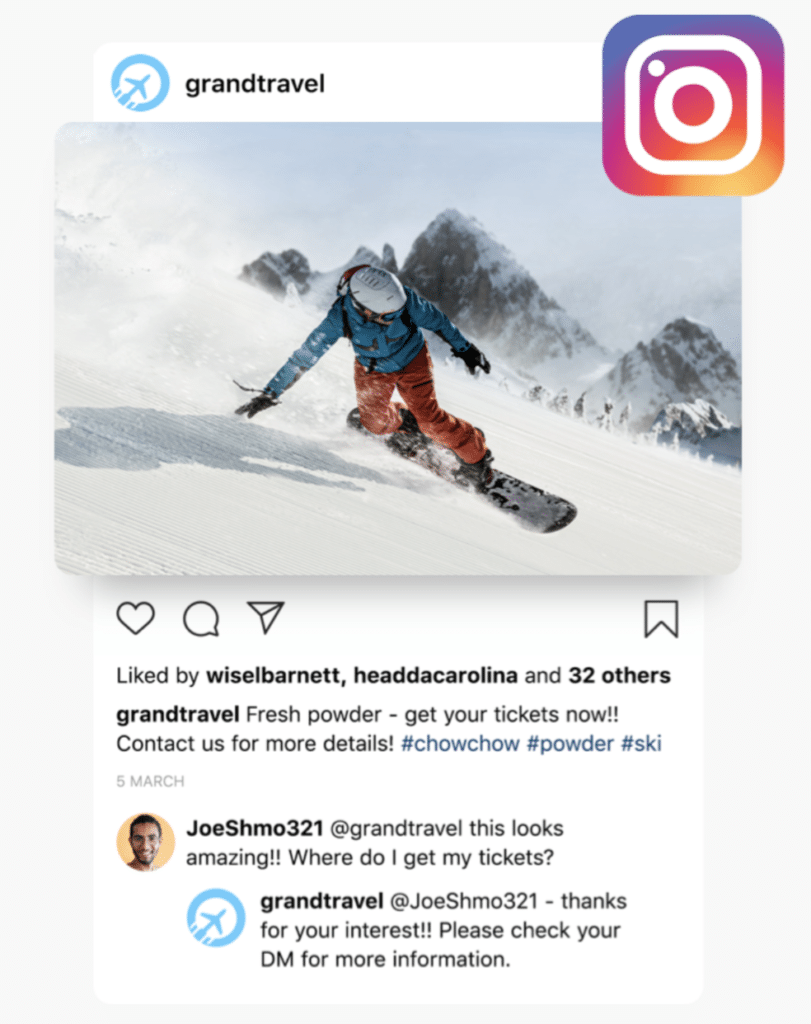
RingCentral Engage Digital allows small businesses to connect all their social media profiles in one place. Not only does this make social media management much easier, it also empowers you to provide a more consistent customer experience across your social channels. All of your team members can see your customer’s journey and interactions, whether they’ve tried to connect on Facebook, LinkedIn, Instagram, or via email.
How to set social media goals for your small business
There are various goals that can be measured through social media. When it comes to setting social media goals for small businesses, the goals may be smaller or more manageable to start out.
These goals can always be built upon results and company growth. Developing SMART goals (specific, measurable, attainable, relevant, and time-Bound) will be integral in proving the success of your social media strategy.
According to research by Hootsuite, the main goals businesses are trying to achieve with social media marketing include building brand awareness (90%), managing brand reputation (77%), building and managing an engaged community (71%), and increasing conversion rates (61%).
These are great broad goals to start with, but be sure to make them SMART. Your goals might fall into some of these categories, but they should be more detailed to help your social media marketers and the rest of your business know exactly what you want to achieve from your social campaigns.
Goals will also hold you and your team accountable, guide your budget, and encourage your team to pay close attention to data to ensure they’re on track.
Depending on your specific business objectives, there are various methods you can use to set SMART goals. For instance, you might choose to set goals based on where you want users to be in your sales funnel, the industry you’re in, or what your competitors are doing.
Let’s say, for example, that your small business social media goal is to build a larger local community following on your Facebook and Instagram pages. A SMART goal might be to increase your follower counts on Facebook and Instagram by 15% by the end of the next quarter.
This goal is specific, measurable, attainable, relevant, and time-bound—it’s SMART.
Whatever goals you set for your social media efforts, be sure to assign them key metrics to measure their success. For instance, if your goal is related to boosting engagement rates, you’ll want to track metrics that measure engagement such as likes, comments, retweets, shares, and so on.
Social media strategies for small businesses
Once you’ve established your social media goals, you can start making them a reality with various social media marketing strategies. Here are some social media tips for small businesses looking to reach their full social potential.
1. Identify your audience on social media
One of the first things you’ll need to do in any digital marketing strategy is to outline your target audience. Although you might have already identified who your audience is, you can leverage social data to deepen your understanding.
Begin by compiling relevant data on your current audience. Look at audience demographics and their online behavior to better understand which social sites they interact with and how they interact with them. You can then use social media analytics tools to dig deeper to understand who’s buying from you and interacting with your business online.
You can also look into analytics directly through the social media platform. For instance, on Twitter, you can click on “Analytics” and “Audiences” to access data to help identify the kind of people who are looking at your page and where they’re located.
Once you’ve defined your target audience, you can create buyer personas that are fictional representations of your ideal new customers. This allows you to better target your social media marketing strategies with those buyer personas in mind.
2. Use social listening to expand your audience
Social listening is the practice of monitoring your brand’s social media accounts for direct mentions, customer feedback, and relevant conversations including industry topics, keywords, or competitors.
The purpose of this is to help you understand what people are saying about your business and use these insights to improve future campaigns, build brand awareness, reach new customers, stay ahead of the competition, and more.
There are a variety of social media listening tools you can use to do this. These tools enable you to monitor activity on your social pages. Once you’re aware of how customers are talking about you and what they’re talking about, you can use social media to reach out directly or share content that’s driven by trending topics in your niche. While a lot of social listening tools are standalone, RingCentral Engage Digital rolls this feature into the rest of its omnichannel contact center, so all of your data is in the same place:
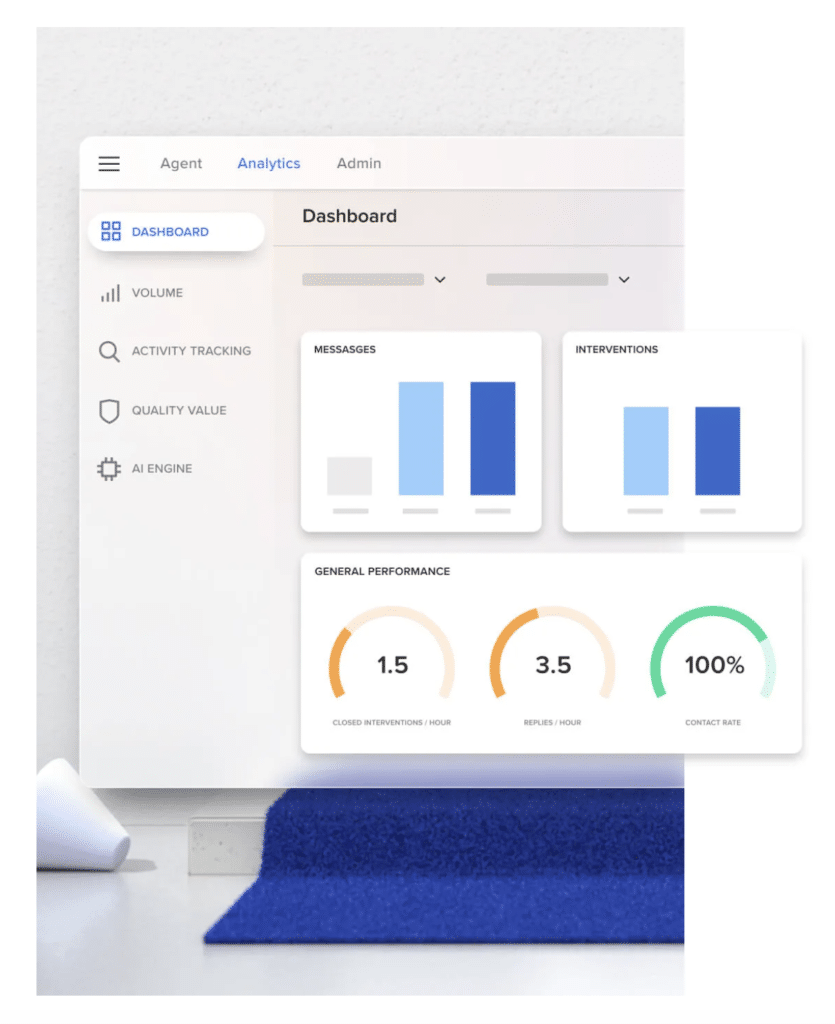
According to the 2021 We Are Social Global Report, the main reason people use social media is to stay up to date with news and current events. Use this to inform your social listening strategy by monitoring key topics and trends in your industry.
This way, you can be the first to share relevant updates with your audience, establishing your brand as an industry leader. The content you share will be relevant and more likely to capture the attention of your audience while they’re scrolling.
3. Build relationships with engagement
One of the main reasons you should be using social media is to engage with your audience directly. That’s how you build relationships with them, but it’s also how you rise in social algorithms and increase your exposure.
There are many reasons customers reach out to brands on social media channels. Your social strategy should involve sharing high-quality content that’s relevant and valuable to your audience, as well as being there to answer any questions they might have.
Nowadays, consumers are more likely to connect with brands on social media when they have questions or product/service support requests. It’s much more efficient than making a phone call or waiting for an email response. With social media, you can respond to customers in a timely fashion through live chat, messaging, or commenting.
With a unified communications platform like RingCentral Engage Digital, you can consolidate all your business communications (including social media channels) in one place.
This empowers your customer service team to provide omnichannel support, whether it’s on the phone, video chat, messaging, email, or social media. Moreover, with all your communications channels and customer data available on a single platform, your team won’t have to waste time toggling between apps, so they can be more productive.
Beyond proactively responding to customers who get in touch with you, there are several other ways to engage with customers to build relationships:
- Create groups: On social platforms like LinkedIn and Facebook, you can create groups to increase brand loyalty and provide followers with a sense of community. For example, National Geographic created a Facebook group called “Women of Impact” (with over 71,000 members!) that encourages women who are passionate about making an impact to join and share issues and initiatives that they’re interested in.
- Connect with entrepreneurs and influencers: This is a great way to boost your brand authority on social media. For small businesses, you can reach out to micro-influencers with as few as 1,000 followers to increase engagement and build trust.
- Mention followers on social media: Sharing user-generated content gleaned from contests or hashtags in your posts and stories is a great way to establish relationships with your followers.
For instance, a retail company might ask fans to share photos of themselves in the brand’s clothing, which are then shared as stories on Instagram, retweets on Twitter, or featured posts on their Facebook page. This will also encourage other people to start interacting with your socials.
4. Stay organized with a social media content calendar
It’s important to plan your content in advance to ensure you’re not left lost for ideas when it comes time to post. Set up a simple Excel spreadsheet as a social media calendar. This way, you can plan your weekly posts including keywords and hashtags you want to include.
Planning your social posts with a content calendar helps ensure your content is fresh and organized. It’ll also help you differentiate between content on different social platforms and how frequently you’re going to post.
It’s also a good idea to factor holidays or special occasions into your calendar. For instance, if you run a successful online ecommerce store, you might plan content related to Black Friday or Christmas, and post more frequently around this time to boost your visibility and encourage customers to take advantage of any deals you’re running.
5. Experiment with different types of content
Social media isn’t just about posting text and static image content anymore. Nowadays, social networks have expanded well beyond this potential. To keep things interesting for you and your viewers, it’s a good idea to mix up content formats every so often.
Be sure to take advantage of platform-specific formats like Instagram stories and reels, TikTok videos, or LinkedIn articles. You might even consider going live on Instagram from time to time to encourage your audience to interact in real time.
It’s always a good idea to use visuals in your posts. Today, video content is one of the most popular and sought-after types of content with audiences.
According to HubSpot, 54% of social media users want marketers to share more video content. Moreover, 54% of marketers agree that video is the most valuable format for social goals. On Instagram, videos get 21.2% more interactions than images and 18.6% more interactions than carousels. YouTube is the second most popular platform for sharing video content according to Buffer. So, if you’re not using video—it’s time to start!
You can also take advantage of different interactive tools available on platforms. For instance, use Instagram’s question or poll feature in stories to encourage your audience to engage with your brand.
6. Choose your hashtags carefully
Hashtags are another great way to increase the reach of your social media posts, and therefore your potential customer base. According to Twitter, tweets with hashtags get 100% more engagement than those without. Hashtags get your posts out in front of people who aren’t already following you, who can also convert to paying customers.
There are plenty of free tools online to help you find the best hashtags for your social posts. You can also find out which hashtags to target by researching those that your top competitors are using.
Also, be aware of hashtags relating to specific holidays or events. This is a great way to take advantage of trending topics while getting your social media posts out there.
7. Track, analyze, and improve
Like everything you do in business marketing, as soon as you start implementing your social media strategy you need to keep track of key metrics and data to understand what’s working and what’s not. Armed with these insights, you can refine your strategy to improve results for the next campaign.
In a competitive business landscape, simply following social media tips and tricks you read about on the internet isn’t going to cut it. You need to design your social media strategy with your business needs and objectives in mind and keep updating it as consumer behaviors and technology trends change.
There are plenty of social media management tools that can help you to track and analyze the performance of your social channels, which brings us to our next section.
Your small business social media strategy: It’s up to you!
Small business social media can be daunting. Remember, there are other ways to reach customers besides social media. Call centers and multi line phones have long been popular in customer service capacities. Discover more tips on social media customer service in this blog.
Investing in social media is necessary to grow your online business in today’s day and age. Following the social media tips mentioned in this article and implementing a solution like RingCentral Engage Digital that allows you to consolidate all of your social media platforms into a single platform is a great place to start.
This way, you can begin increasing your brand reach, driving more traffic to your website, and converting more customers in no time at all.
Originally published Nov 24, 2020, updated Jul 23, 2024




